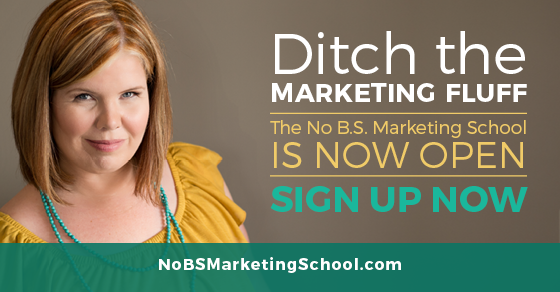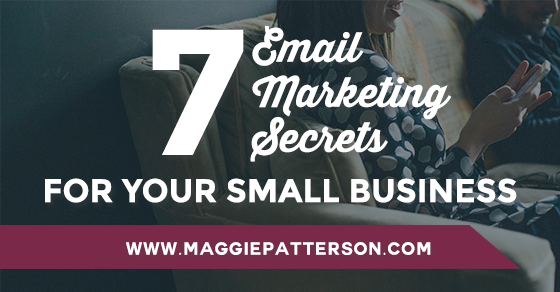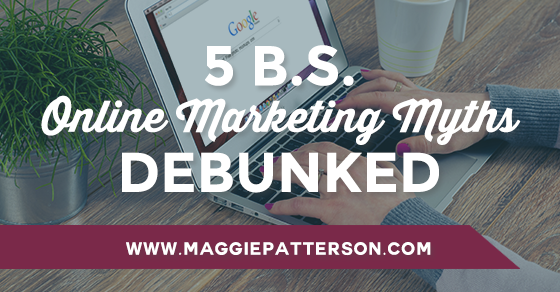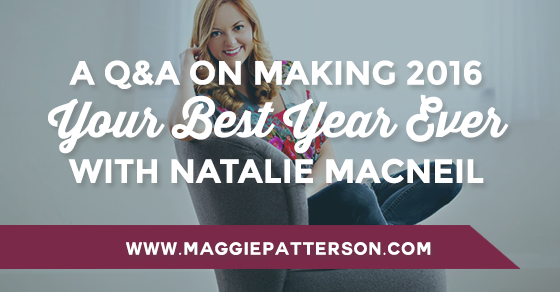
When you think back to the past year, how does it make you feel?
Do you have that moment of pride where you think, “yeah, totally nailed it!” or is it more like “well, that was good enough, but, I could totally do better next time around.”?
No matter how you feel, the honest truth is that there’s always room for improvement. And it’s the small things that make a major difference.
So if you’re already thinking “Next year will be different”, now’s the time to take action and figure out where you can build on the foundation you’ve already got.
Which is exactly why I’m super excited to share some of the Q&A I had with Natalie MacNeil, creator of the Conquer Club and She Takes on the World, a few weeks back.
When I was with Natalie in Mexico for her Conquer Club Retreat, I got to spend a lot of time with her and we talked a lot about the small things that make the difference between a good enough business and one that’s truly great. It’s often things you don’t even think could make that much of a difference.
We covered three key areas – clarity, copy and conversions – which I personally can attest to the power of in my business and for my clients.
Here’s what Natalie had to say:
What’s the Biggest Lesson You’ve Had to Learn When it Comes to Getting Clear on Your Message and Audience?
It took me a while to actually figure this all out. She Takes on the World started off as just a blog for me while I was building a different business. Honestly, I just wasn’t thinking about audience at that time, and I was using She Takes on the World as an outlet to share my opinions and to rant and those kinds of things.
When I did start taking it seriously, I knew that I had to get clear on who I was going to serve and why. Honestly, it probably took me two full years to get that clarity.
Many times I wouldn’t say any of the things I really wanted to say because I thought people were going to leave my list for it, which was really, really stupid. I made a lot of mistakes along the way when it comes to trying to get clarity on that audience, and now I just don’t hold back. I’m a lot clearer on what my audience needs.
It’s all about testing, experimenting, and seeing what works. Talk to your audience. Talk to people. Ask them what they want. Sometimes you just need to get out there and talk to people.
What’s the fastest way to get clear quickly?
If I could go back and talk to Natalie, say, five years ago, I would shake her and be like, “Be the fullest fucking version of yourself and do it right now!” because I think, at the time, I was so worried about losing subscribers.
Like if somebody unsubscribed, it was the end of the world to me, and there was so much emotion in that that I’ve been able to take out of the equation now. If people unsubscribe because you are showing your true colors, those just aren’t your people.
You only want your people on your list, so I actually would have, if I could go back now, I would have been a little more controversial from the beginning. I would have said what’s really on my mind. I would have ranted just a little bit more, and I just wouldn’t have backed away from sharing myself fully, from saying something like, “Guess what. I’m at an ashram this weekend, and I don’t give a shit what you think about that.” Those are the things that I wish I would have done a little earlier.
[clickToTweet tweet=”Be the Fullest Version of Yourself – Q&A with @NatalieMacNeil. New blog post from @magspatterson. ” quote=”Be the Fullest Version of Yourself – Q&A with @NatalieMacNeil. New blog post from @magspatterson. “]
Copy is so much more than words. But, when you’re working on it – copy for your business – where do you start?
There were so many things that made me feel like, “You know what? I’m just not that great of a writer.” Then I realized that I just didn’t have my own method for writing.
Now I always start on paper. I actually outline all of my ideas and my episodes for She Takes on the World TV in a notebook first. And, I usually start with the end in mind, so I start by asking what is my reader walking away with, and what are they able to put into action because they read this, because they came and watched my video?
Then I step into the shoes of my ideal client, and I actually write questions on her behalf. I’ll jot down things like, “Natalie, how can I apply this to my product-based business?” Or, “Natalie, what tool would help me implement this?”
Next, I hit record on my app called Super Note Recorder on my iPhone. I just answer all the questions. I talk to that person like they’re sitting right in front of me, and then I get that transcribed. I edit, and I’ll form a post or a script from that transcription. That’s usually the stage where I’ll get an editor involved. I sometimes get a copywriter involved.
For me, it’s so important to be able to have that conversational tone to the content, especially because I do so much video content. So, when I’m creating massive batches of content, and I always batch my content–that’s one tip that I recommend you implement as well–this is just the process that feels good for me.
Give yourself permission to do things in a way that’s going to feel good for you. You don’t have to copy anybody else’s process. That has helped me to get my words out there, out into the world.
Let’s talk about conversions. Why do we need to pay attention to conversions in our business?
I have so much to say on this. This is purely a matter of what you think about yourself. Do you in fact go screaming in the other direction? You might be thinking “Well, I’m supposed to be passionate about my business, and I’m not passionate about this, so I’m just going to do something that I’m actually passionate about, and this is not it. I don’t want to do things that don’t make me feel that passion in my business.”
Guess what. You’re not ready to be the CEO of your business then. You can be passionate about your business and still have to do the sucky things too. You do these crappy things because you’re passionate about your business and because you’re passionate about serving your customers. That’s really the way that I look at it.
[clickToTweet tweet=”The numbers make the big vision feasible. Q&A with @nataliemacneil w/@magspatterson” quote=”The numbers make the big vision feasible. Q&A with @nataliemacneil w/@magspatterson”]
I don’t like math. The numbers can scare me too sometimes. But you know what? You can’t make the best decisions when you don’t know the numbers. It’s that simple, and that is the reason why I focus on conversion rates. Sometimes it’s me, sometimes it’s members of my team that pull these numbers so that I can always be looking at them when I’m making decisions in my business.
That’s what makes me the CEO of my business, this person leading the company into that bigger vision that we want to grow into. It’s just part of being able to achieve that bigger vision. It makes it more feasible. It helps you make the important decisions that are going to drive your business forward. You need to pay attention to this stuff even if it’s something that you are totally not passionate about.
Takeaways from Natalie
Here’s a quick recap of action items you can take away and apply from this conversation:
- Be yourself. Yes, something you hear all the time, but it’s the easiest way to get clear. It’s when you’re trying to be something you’re not that you get muddled.
- Clarity comes from action. Talk to real people.
- Create a clear writing process that works for you to create all of your content. There’s no right or wrong. Do what works for you.
- Conversions matter. If you’re not ready to measure, you’re not really in this to be the CEO of your business. Passion is great, but you’re not going to be able to pursue your passion if you ignore the numbers.
Super actionable content, and all little things that can help you make 2016 rock that much harder. Small wins add up to big results by year end.
If you’re ready to ready to rock 2016, you can join Natalie and her team of mentors (including me) in the Conquer Club. Details below on a sweet deal to get in on the action with a bonus offer from me.
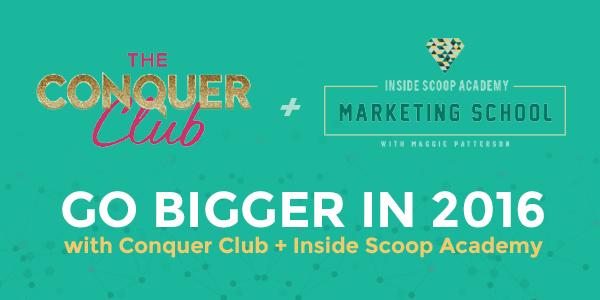
I’ve teamed up with Natalie MacNeil, the creator of the Conquer Club, to offer you an amazing bonus if you sign up for the 2016 Conquer Club. When you sign up through me you’ll get a spot in the Inside Scoop Academy: Marketing School’s Winter class that starts in February. (This is the course formerly known as the No B.S. Marketing School – but that’s a story for another day.)
For the price of the Conquer Club – you’ll get the Inside Scoop Academy: Marketing School for free. (A $749 value).
Registration closes November 10th at 9:00 p.m. ET.
Click here to get all the details on this sweet deal.
The need-to-know. If you purchase, you’ll be purchasing directly through Natalie MacNeil and She Takes on the World and will be sent to her sales page and checkout. For this, I will be receiving a commission for my referrals.



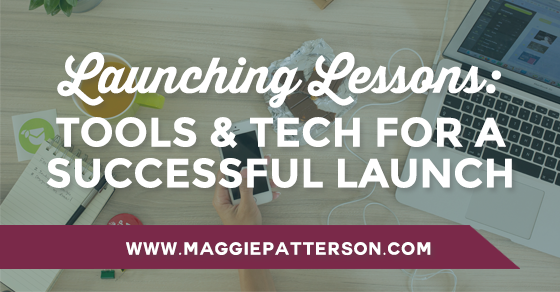
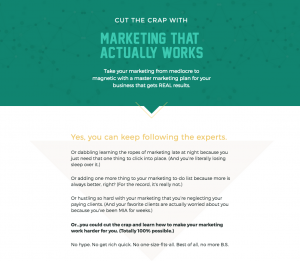
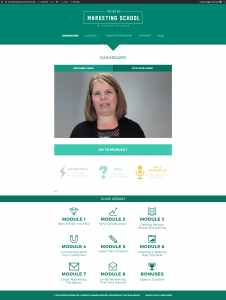
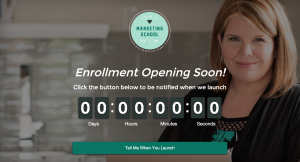
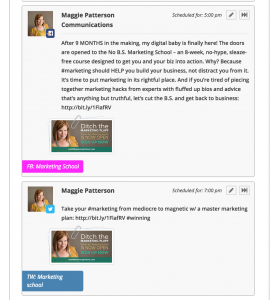
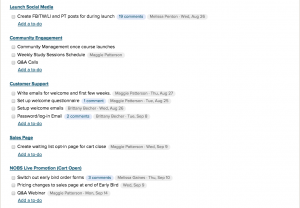
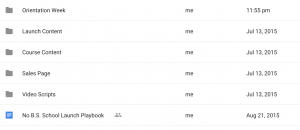 As an alternative, you could use
As an alternative, you could use 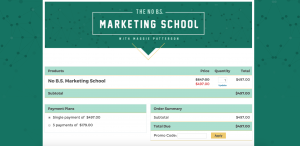

 There’s no shortage of marketing advice out there, but when it comes to online marketing the concept of the marketing cycle is well played out.
There’s no shortage of marketing advice out there, but when it comes to online marketing the concept of the marketing cycle is well played out.